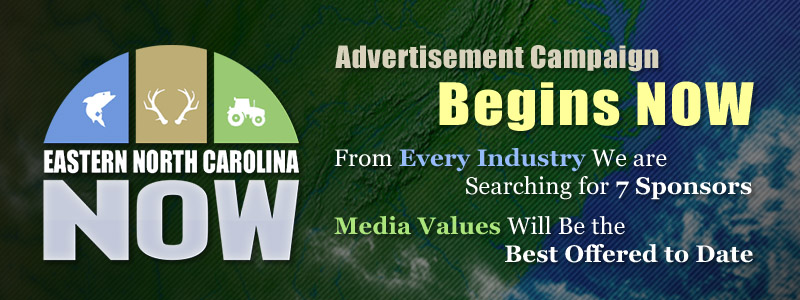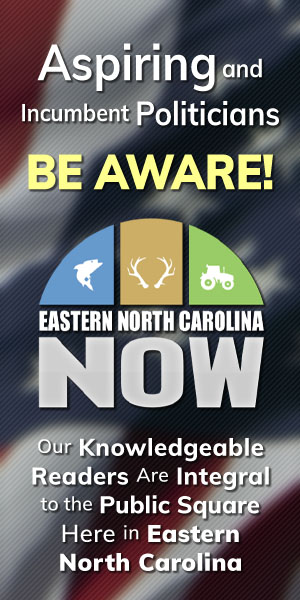The First Amendment Guarantees ALL Freedoms, including a Truthful Press
State Tops Region on Labor Market
Publisher's note: This article appeared on John Hood's daily column in the Carolina Journal, which, because of Author / Publisher Hood, is linked to the John Locke Foundation.
North Carolina's labor market ended 2016 on a strong note. Total employment in the state hit 4,360,200 jobs in December, up two percent from the December 2015 figure. That exceeds the average national rate of job creation (1.5 percent) and the average for the 12-state Southeastern region (1.7 percent).
If you measure the labor market from the other direction, emphasizing joblessness rather than jobs gained, North Carolina's so-called "headline" unemployment rate went up slightly during the last few months of 2016, from 4.6 percent in August to 5.1 percent in December. But given the small size of the survey involved, this is not a meaningful trend. In fact, given the margin of sampling error, North Carolina's rate in December was not statistically significant from the national headline rate of 4.7 percent.
More importantly, North Carolina's uptick in that headline number, called the U-3 rate, mostly reflects previously sidelined workers now returning to a healthier labor market. The U-3 rate only counts people who are actively looking for jobs but can't find one. It leaves out discouraged workers who've given up looking, those who suspend their job search for other reasons (such as relocating to another state or going back to school), and part-time workers who would rather be working full-time but can't find a full-time job (often called the "underemployed").
Fortunately, the federal government counts all those who aren't captured in the headline rate. Its broadest measure, called the U-6 rate, is available in 12-month averages, updated every quarter. When it comes to gauging the health of the labor market, it's arguably the best tool for the job.
North Carolina's U-6 rate for 2016 was 9.4 percent. That's a dramatic drop from the 2015 rate of 11.3 percent - the fourth-largest drop in the nation, in fact, and the largest in the Southeast. During the Great Recession and its immediate aftermath, North Carolina greatly exceeded the national and regional averages in U-6 unemployment and underemployment. Now, we don't. The national rate is 9.6 percent. Since 2012, North Carolina's U-6 rate fell by 6.9 points - also the largest labor-market improvement in the Southeast, and the country's fifth-largest.
As longtime readers of this column know, I don't think economic performance is entirely or even mostly determined by public policy. Geography matters, for example. In recent years, states on or near the Pacific Rim and the South Atlantic Coast (from the Carolinas to Florida) have often dominated national lists of top economic performers. Both are regions that have benefitted from major trade flows of goods and people.
But if you adjust for other factors, public policies do influence state economies. Hundreds of peer-reviewed academic studies demonstrate the effects, which are largely consistent with what fiscal conservatives would predict. States with lower taxes, lower regulatory burdens, higher educational performance, and higher-quality infrastructure tend to post higher rates of growth in jobs, incomes, and gross domestic product.
What doesn't correlate with state economic growth? Most government expenditures, with two interesting exceptions: spending on welfare and other public assistance programs, which is usually associated with lower subsequent economic performance, and spending on courts and public safety, which is usually associated with higher subsequent performance.
Using the last 12 months of data for each, North Carolina is outperforming the national and regional averages in job creation, overall labor-market gains, growth in per-capita income, and growth in GDP. In some cases, the differences are large. In others, the differences are modest. And on one measure, median household income, the comparison isn't so favorable.
On balance, then, Republican lawmakers and others who have helped to craft North Carolina's economic policies over the past few years have good reasons to believe their decisions were wise. They'll want to build on that momentum, not to halt or reverse the state's progress on regulatory relief, tax reduction, unemployment-insurance reform, and other fronts.
Progressives do want to halt and reverse that progress. I know it's confusing, but don't blame me. I didn't invent the political labels currently in vogue.
Go Back
North Carolina's labor market ended 2016 on a strong note. Total employment in the state hit 4,360,200 jobs in December, up two percent from the December 2015 figure. That exceeds the average national rate of job creation (1.5 percent) and the average for the 12-state Southeastern region (1.7 percent).
If you measure the labor market from the other direction, emphasizing joblessness rather than jobs gained, North Carolina's so-called "headline" unemployment rate went up slightly during the last few months of 2016, from 4.6 percent in August to 5.1 percent in December. But given the small size of the survey involved, this is not a meaningful trend. In fact, given the margin of sampling error, North Carolina's rate in December was not statistically significant from the national headline rate of 4.7 percent.
More importantly, North Carolina's uptick in that headline number, called the U-3 rate, mostly reflects previously sidelined workers now returning to a healthier labor market. The U-3 rate only counts people who are actively looking for jobs but can't find one. It leaves out discouraged workers who've given up looking, those who suspend their job search for other reasons (such as relocating to another state or going back to school), and part-time workers who would rather be working full-time but can't find a full-time job (often called the "underemployed").
Fortunately, the federal government counts all those who aren't captured in the headline rate. Its broadest measure, called the U-6 rate, is available in 12-month averages, updated every quarter. When it comes to gauging the health of the labor market, it's arguably the best tool for the job.
North Carolina's U-6 rate for 2016 was 9.4 percent. That's a dramatic drop from the 2015 rate of 11.3 percent - the fourth-largest drop in the nation, in fact, and the largest in the Southeast. During the Great Recession and its immediate aftermath, North Carolina greatly exceeded the national and regional averages in U-6 unemployment and underemployment. Now, we don't. The national rate is 9.6 percent. Since 2012, North Carolina's U-6 rate fell by 6.9 points - also the largest labor-market improvement in the Southeast, and the country's fifth-largest.
As longtime readers of this column know, I don't think economic performance is entirely or even mostly determined by public policy. Geography matters, for example. In recent years, states on or near the Pacific Rim and the South Atlantic Coast (from the Carolinas to Florida) have often dominated national lists of top economic performers. Both are regions that have benefitted from major trade flows of goods and people.
But if you adjust for other factors, public policies do influence state economies. Hundreds of peer-reviewed academic studies demonstrate the effects, which are largely consistent with what fiscal conservatives would predict. States with lower taxes, lower regulatory burdens, higher educational performance, and higher-quality infrastructure tend to post higher rates of growth in jobs, incomes, and gross domestic product.
What doesn't correlate with state economic growth? Most government expenditures, with two interesting exceptions: spending on welfare and other public assistance programs, which is usually associated with lower subsequent economic performance, and spending on courts and public safety, which is usually associated with higher subsequent performance.
Using the last 12 months of data for each, North Carolina is outperforming the national and regional averages in job creation, overall labor-market gains, growth in per-capita income, and growth in GDP. In some cases, the differences are large. In others, the differences are modest. And on one measure, median household income, the comparison isn't so favorable.
On balance, then, Republican lawmakers and others who have helped to craft North Carolina's economic policies over the past few years have good reasons to believe their decisions were wise. They'll want to build on that momentum, not to halt or reverse the state's progress on regulatory relief, tax reduction, unemployment-insurance reform, and other fronts.
Progressives do want to halt and reverse that progress. I know it's confusing, but don't blame me. I didn't invent the political labels currently in vogue.
| John Locke Foundation: Prudent Policy / Impeccable Research - Volume CCXIV | Carolina Journal, Editorials, Op-Ed & Politics | Sally Yates: "You're Fired!" |
Latest Op-Ed & Politics
|
illegal alien "asylum seeker" migrants are a crime wave on both sides of the Atlantic
Published: Thursday, April 18th, 2024 @ 8:10 am
By: John Steed
|
|
UNC board committee votes unanimously to end DEI in UNC system
Published: Thursday, April 18th, 2024 @ 7:54 am
By: John Steed
|
|
this is the propagandist mindset of MSM today
Published: Wednesday, April 17th, 2024 @ 3:04 pm
By: John Steed
|
|
Police in the nation’s capital are not stopping illegal aliens who are driving around without license plates, according to a new report.
Published: Wednesday, April 17th, 2024 @ 8:59 am
By: Daily Wire
|
|
same insanity that created Covid
Published: Wednesday, April 17th, 2024 @ 8:58 am
By: John Steed
|
|
Davidaon County student suspended for using correct legal term for those in country illegally
Published: Wednesday, April 17th, 2024 @ 7:23 am
By: John Steed
|
|
given to illegals in Mexico before they even get to US: NGOs connected to Mayorkas
Published: Tuesday, April 16th, 2024 @ 11:36 am
By: John Steed
|
|
committee gets enough valid signatures to force vote on removing Oakland, CA's Soros DA
Published: Tuesday, April 16th, 2024 @ 10:32 am
By: John Steed
|
|
other pro-terrorist protests in Chicago shout "Death to America" in Farsi
Published: Monday, April 15th, 2024 @ 9:13 pm
By: John Steed
|
|
claim is needed "to meet climate targets
Published: Monday, April 15th, 2024 @ 2:07 pm
By: John Steed
|
























